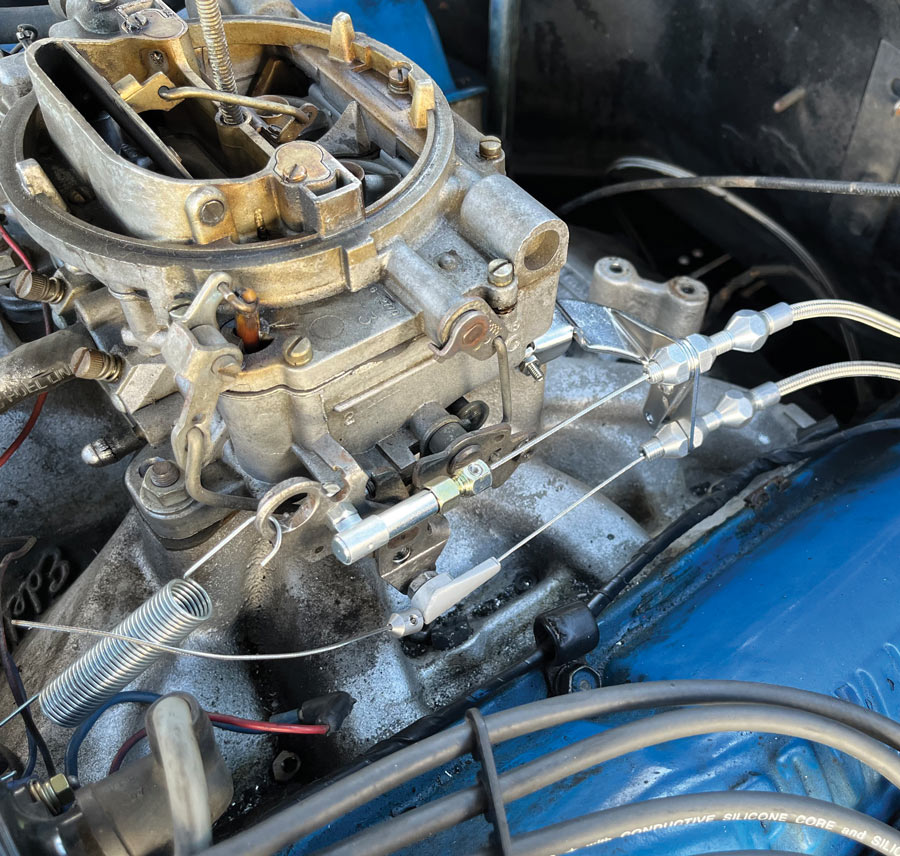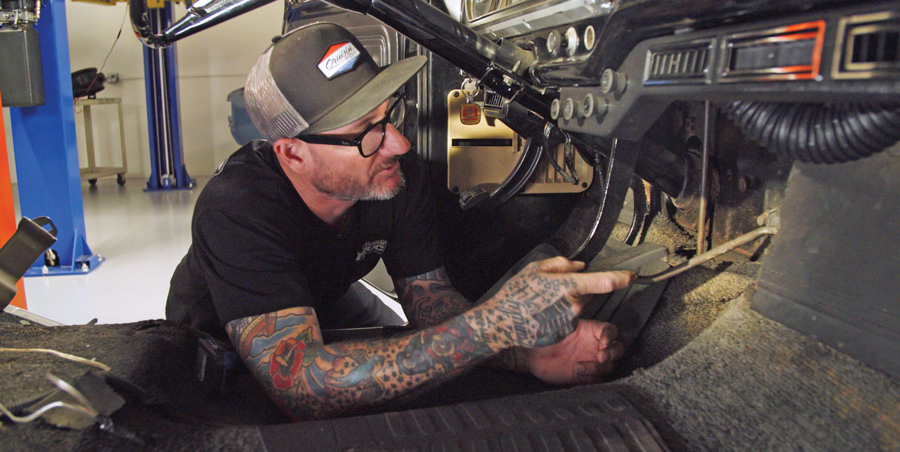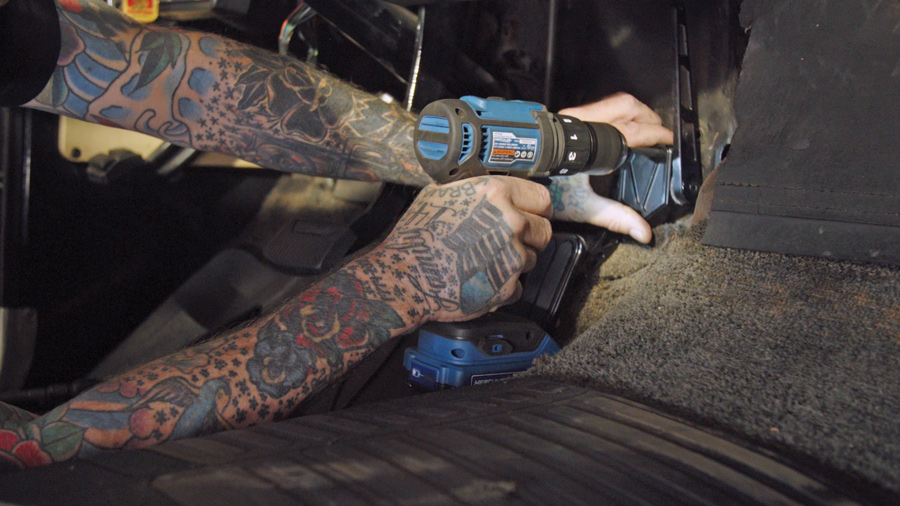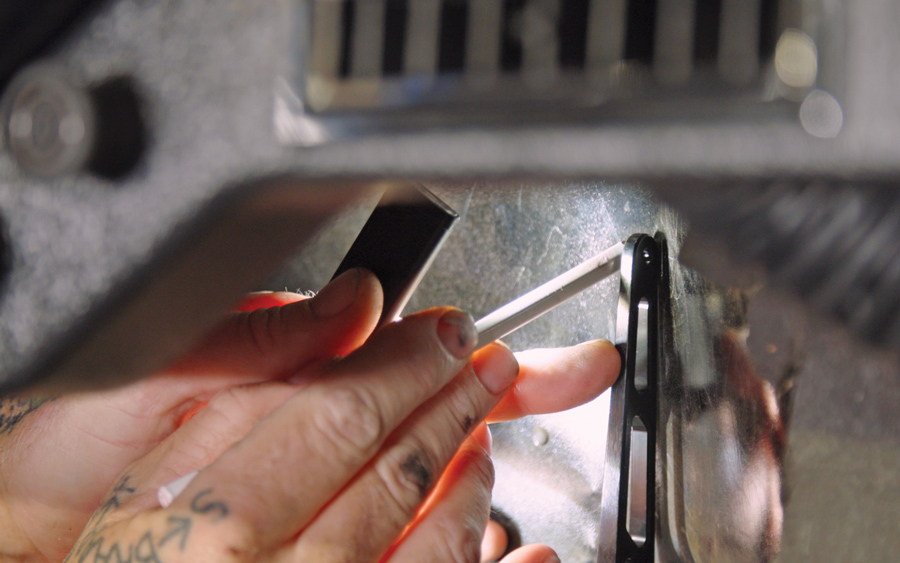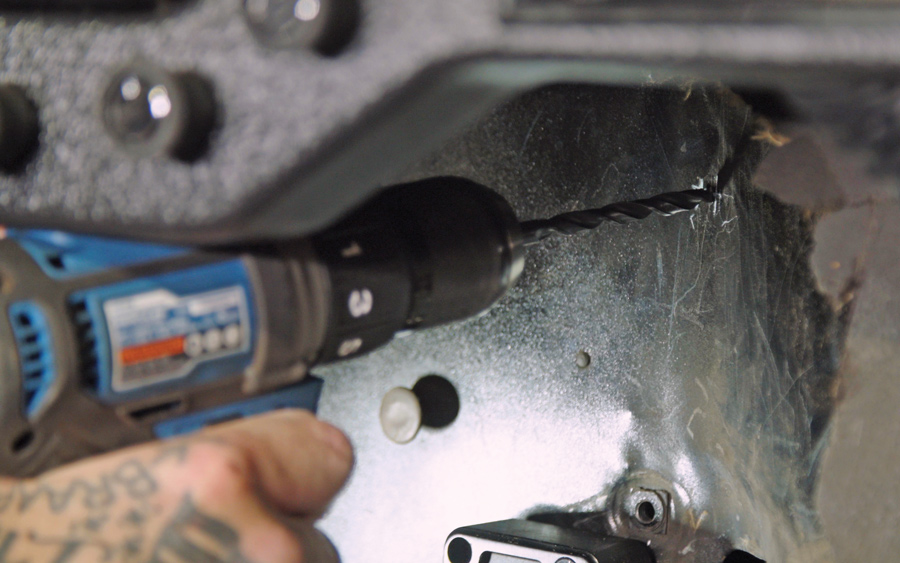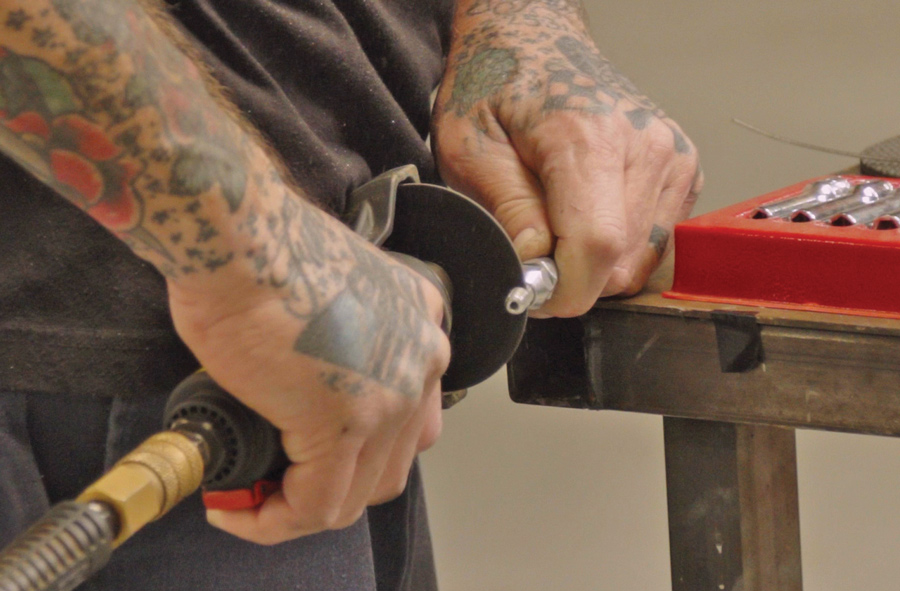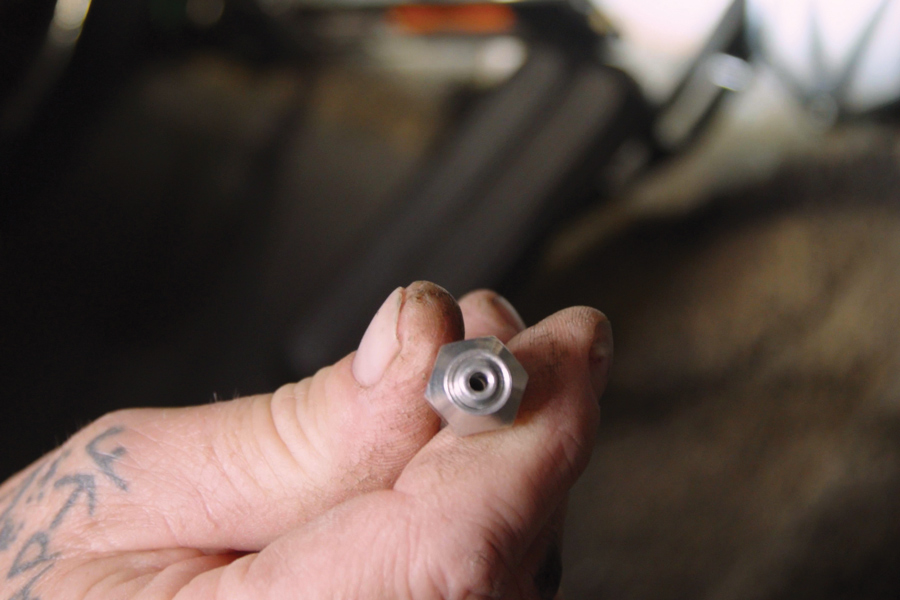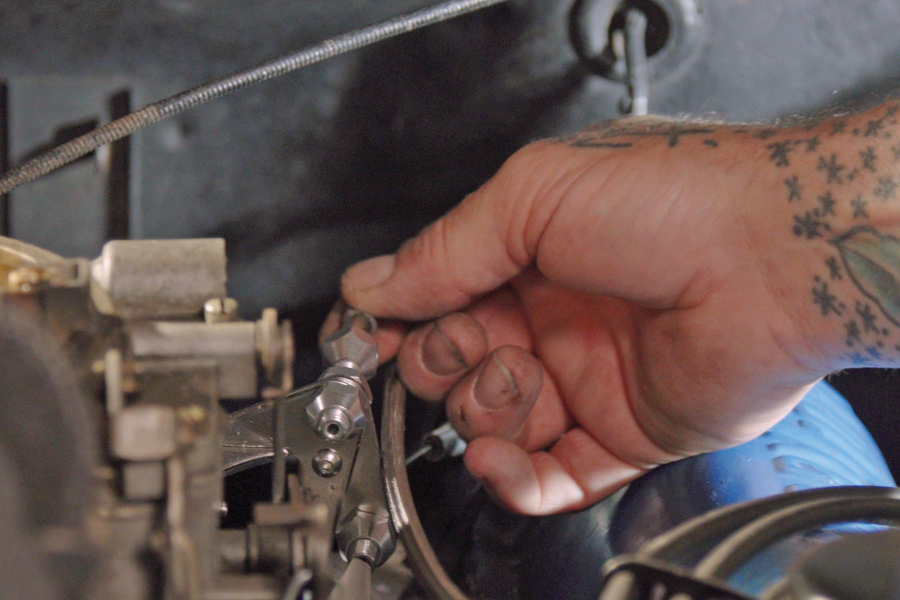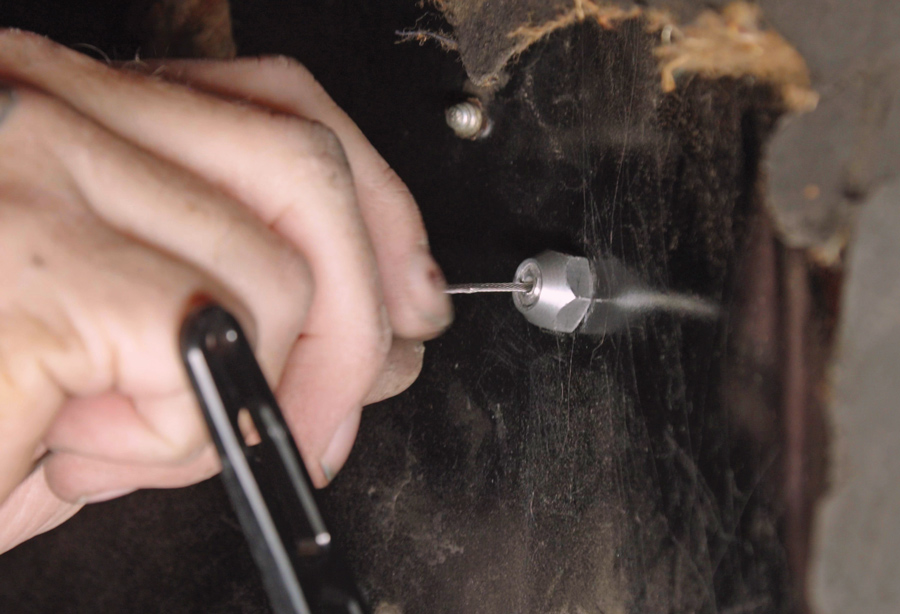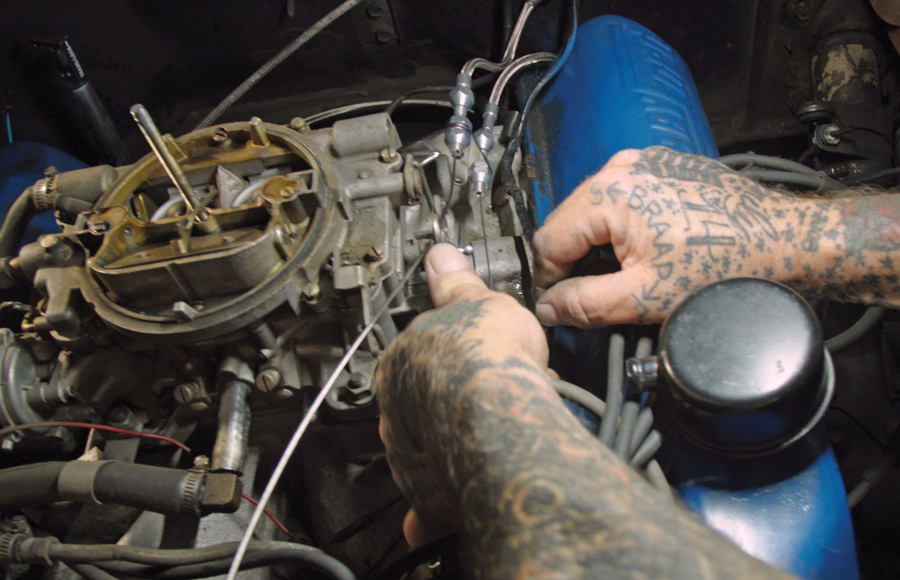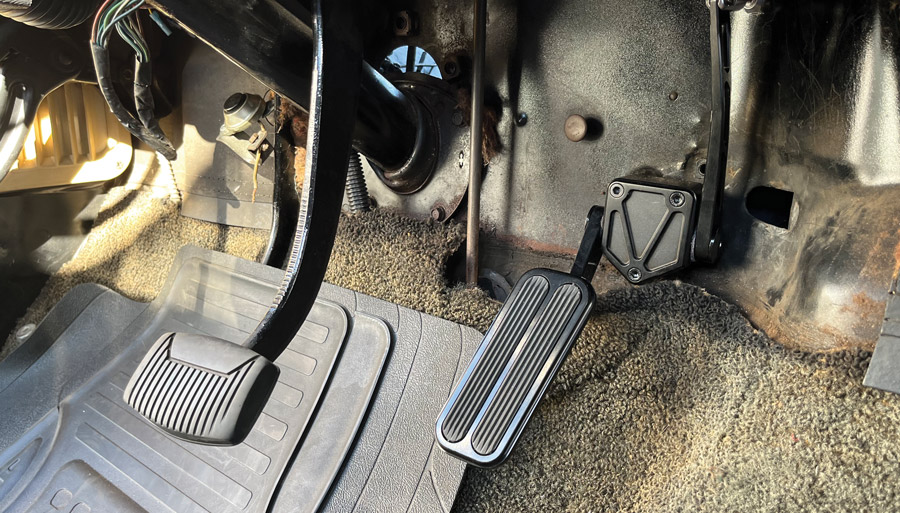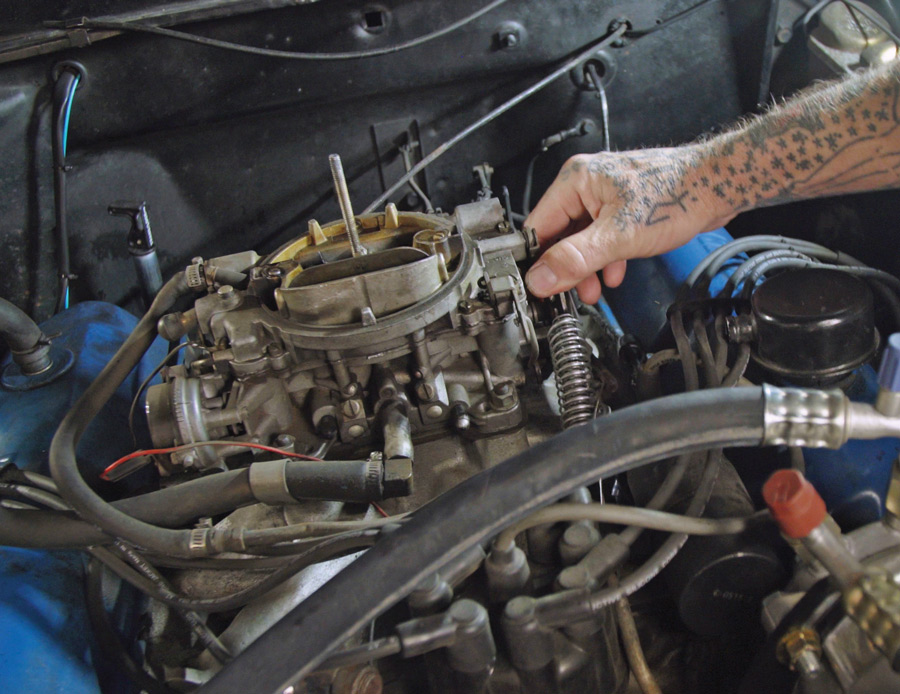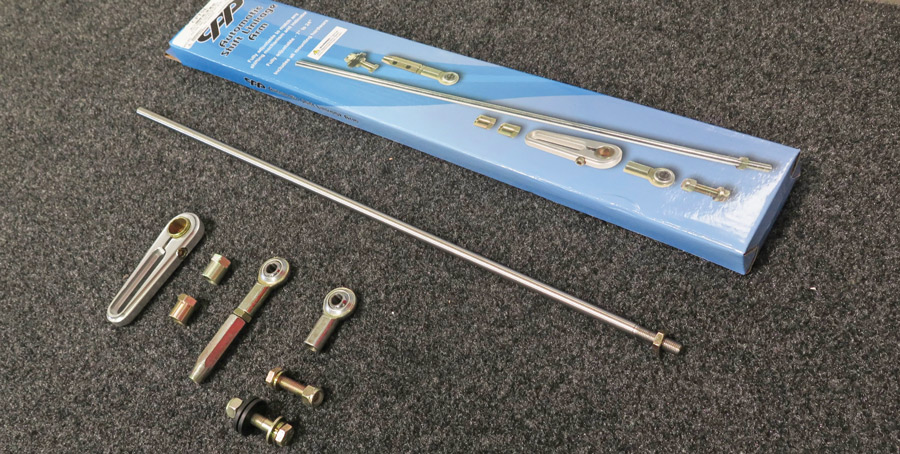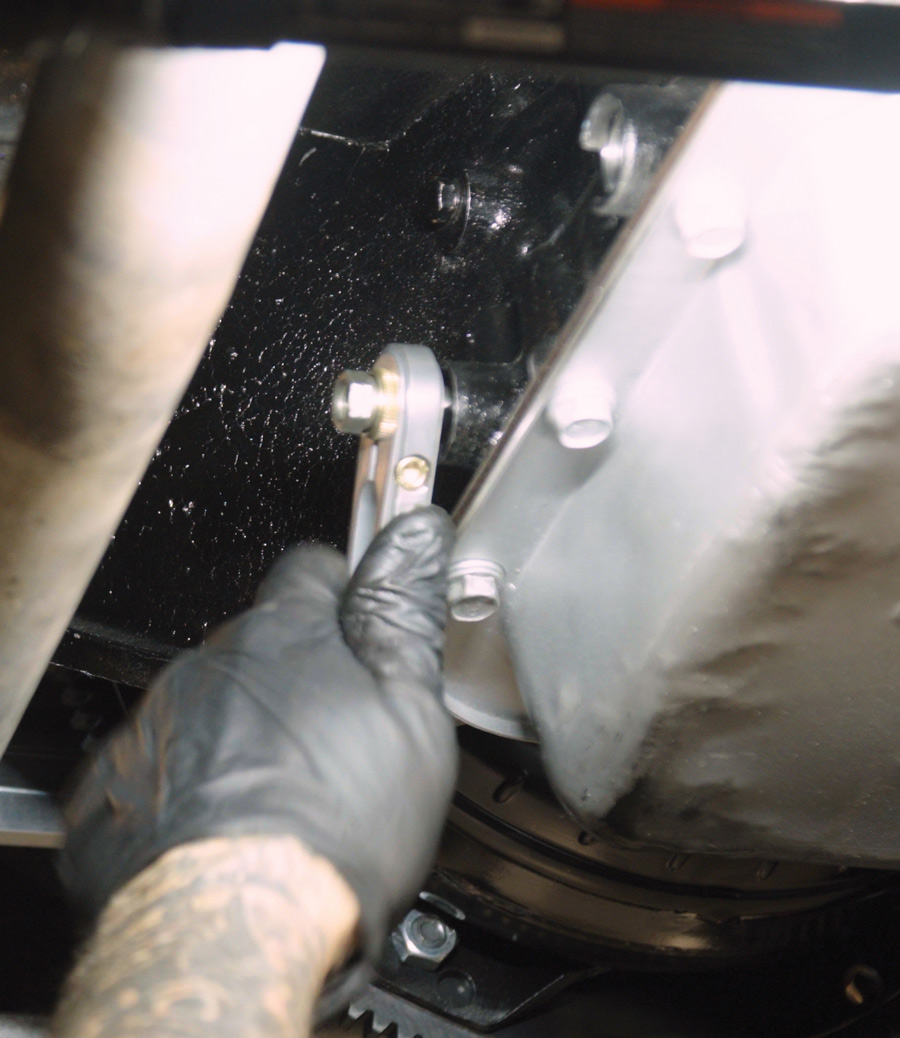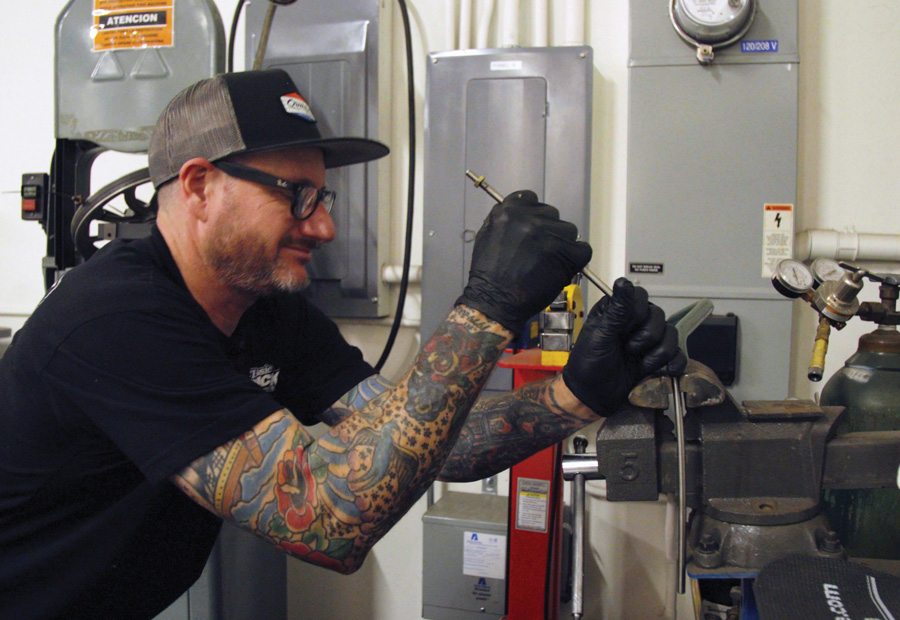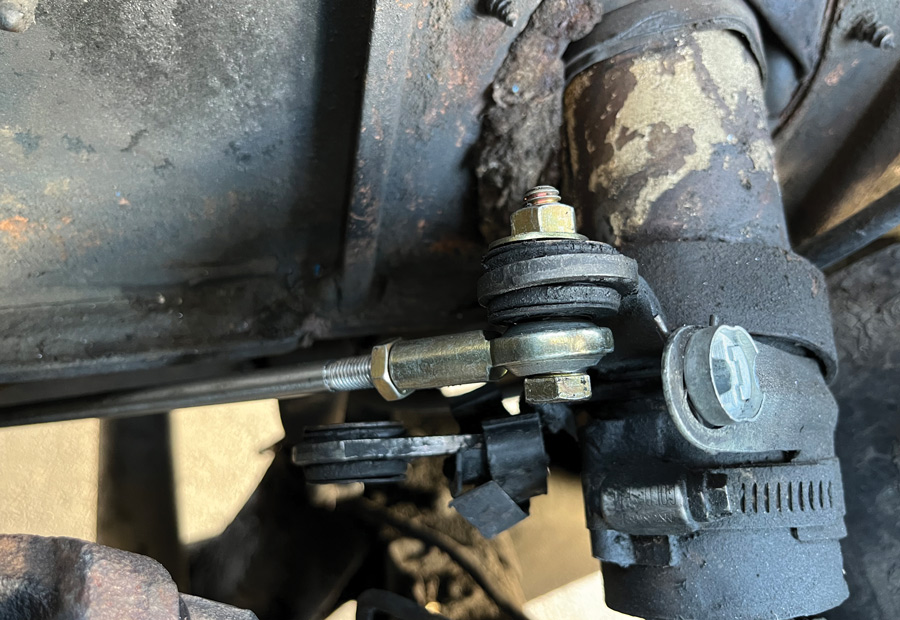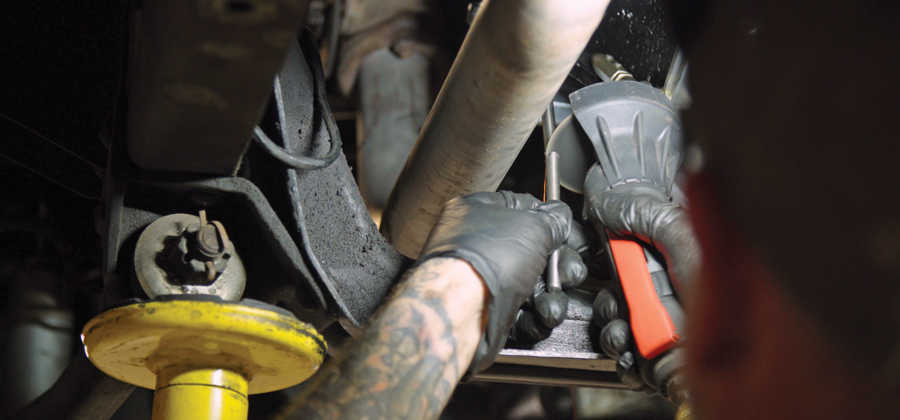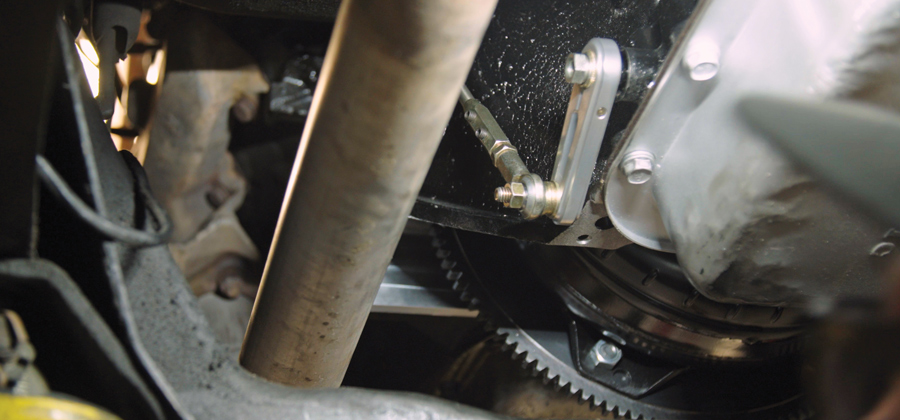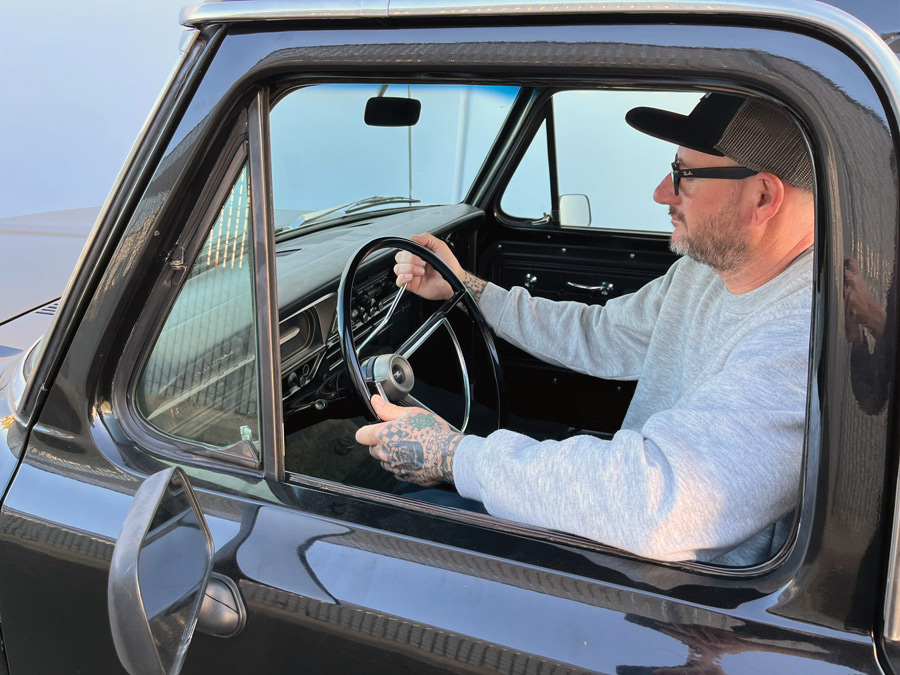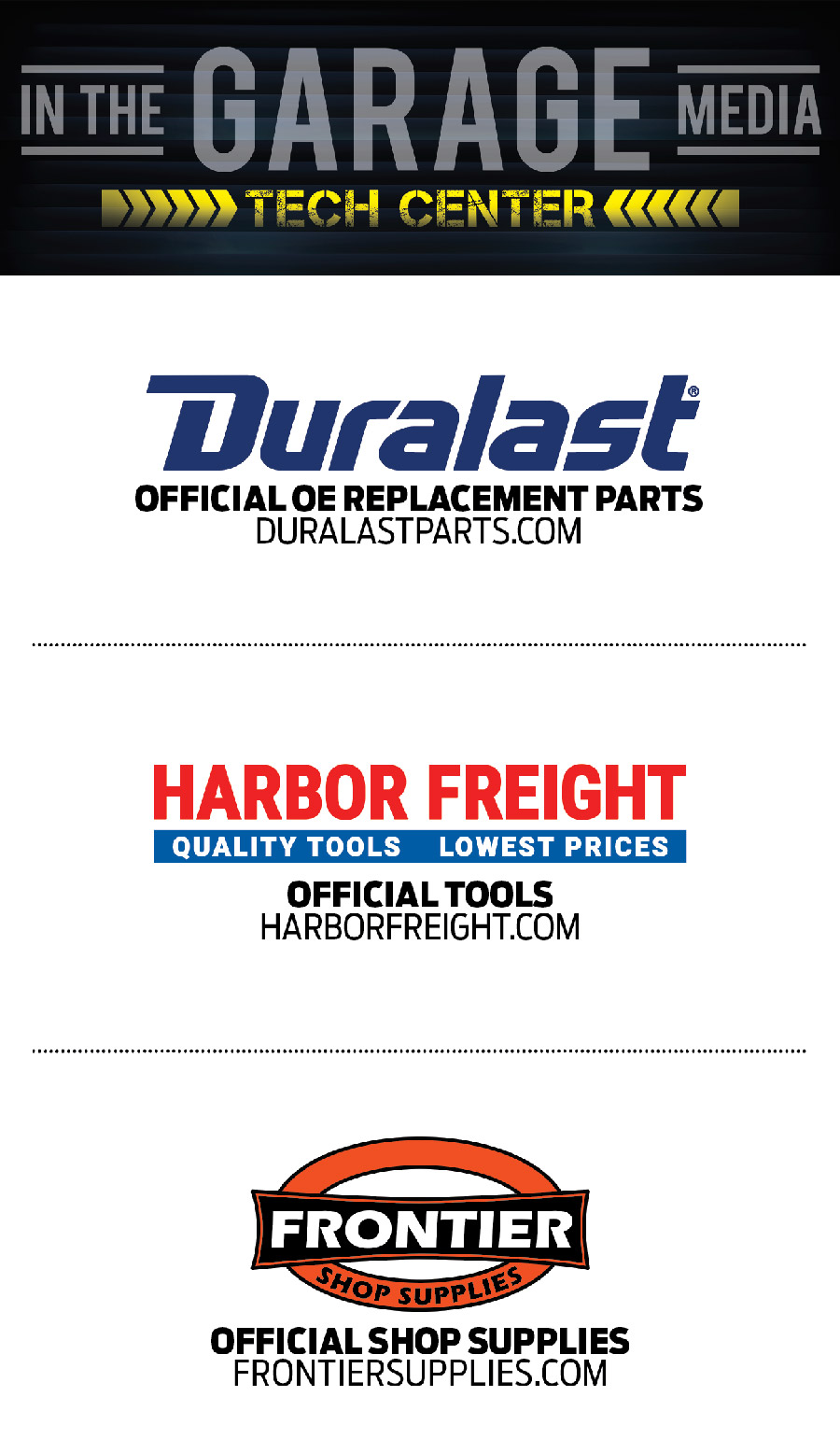
 Tech
Tech
 Photography and Videography by Ryan Foss
Photography and Videography by Ryan Fossf the sacrilegious marrying of the GM 200-4R behind the 360 FE in our ’67 F-100 last month didn’t scare (piss) you off, welcome back for the install wrapup! We left a couple important items unattended to, namely the manner in which to operate the freshly implanted overdrive transmission, but also the manner in which to accommodate said OD’s kickdown (TV cable) in relation to the throttle actuation.
While a brand-new automatic shifter–equipped column for the ’67-and-up F-100s is in the works at Classic Performance Products (CPP), we wanted to utilize the existing manual trans column using CPP’s “universal” automatic shift linkage arm kit so that we could enjoy the fruit of the overdrive labor in the meantime. The slight downside to this method of making do is not having the detent for gear selection built into the column shifter, as it was designed originally for automatic (late-model/aftermarket) column swaps. However, the transmission’s integral shifter detent (along with proper linkage setup and adjustment) will help ensure you stay in the gear you select!
With (all) that said, how about we button up this bipartisan Bowtie/Blue Oval transmission swap once and for all!

